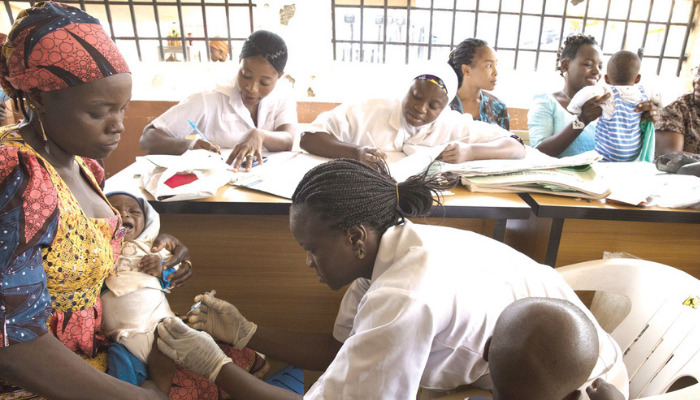After three years of the COVID-19 pandemic, countries are showing the first major signs of health system recovery, according to a new report from the World Health Organization (WHO). The report, titled “Fourth round of the global pulse survey on continuity of essential health services during the COVID-19 pandemic: November 2022–January 2023,” found that by early 2023, countries reported reduced disruptions in the delivery of routine health services.
However, the report also highlighted the need for continued investment in recovery and stronger resilience for the future. Among the 139 countries that responded to the survey, almost one-quarter of services on average continued to experience disruptions. Persisting disruptions were due to both demand- and supply-side factors, including low levels of healthcare-seeking in communities as well as limited availability of health workers and other healthcare resources such as open clinics or available stocks of medicines and products.
“It is welcome news that health systems in the majority of countries are starting to restore essential health services for millions of people who missed them during the pandemic,” said Dr Rudi Eggers, WHO Director for Integrated Health Services. “But we need to ensure that all countries continue to close this gap to recover health services, and apply lessons learnt to build more prepared and resilient health systems for the future.”
According to the report, fewer countries reported intentionally scaling back access across all service delivery platforms and essential public health functions since 2020-2021 reporting, showing an important step to return to pre-pandemic levels of service delivery and broader system functioning. By the end of 2022, most countries reported partial signs of service recovery, including in services for sexual, reproductive, maternal, newborn, child and adolescent health; nutrition; immunization; communicable diseases (including malaria, HIV, TB, and other sexually-transmitted infections); neglected tropical diseases; noncommunicable diseases; management of mental, neurological and substance use disorders; care for older people; and traditional and/or complementary care.
Nigeria was one of the 139 countries that responded to the fourth round of the pulse survey. While the report notes that health systems are showing some signs of recovery and that disruptions to essential health services have reduced, challenges still remain. Persisting disruptions in service delivery are due to both demand- and supply-side factors, including low levels of health care-seeking in communities, as well as limited availability of health workers and other health-care resources such as open clinics or available stocks of medicines and products.
Despite signs of recovery, service disruptions persist across countries in all regions and income levels, and across most service delivery settings and tracer service areas. Countries are also dealing with increasing service backlogs – most frequently in services for screening, diagnosis and treatment of noncommunicable diseases – which can lead to negative consequences as people are delayed access to timely care.
Recovering essential health service delivery is critical because disruptions may have even greater adverse health effects at the population and individual level than the pandemic itself, especially among vulnerable populations. In another important step towards system recovery and transition, most countries have made progress in integrating COVID-19 services into routine health service delivery. About 80-90% of countries have fully integrated COVID-19 vaccination, diagnostic and case management services as well as services for post COVID-19 conditions into routine service delivery.
However, most countries (80% of 83 responding countries) reported at least one bottleneck to scaling up access to essential COVID-19 tools, with health workforce issues and lack of funding representing the most common barriers. Most countries have started to apply what they have learnt during the COVID-19 pandemic, including through the institutionalization of a number of innovative service disruption mitigation strategies into routine health service delivery. These include deployment of telemedicine approaches, promotion of home-based care or self-care interventions, approaches for strengthening health workers availability, capacities and support mechanisms, innovations in procuring and delivering medicines and supplies, more routine community communications, and partnerships with private sector providers.
Three-quarters of countries reported additional funding allocation towards longer-term system recovery, resilience, and preparedness. Countries expressed the need for WHO support to address remaining challenges in the COVID-19 context and beyond, most frequently related to health workforce strengthening, building the monitoring capacities of health services, designing primary health care-oriented models of care, governance, policy and planning, and financial planning and funding. WHO is committed to continuing to work with countries and partners to support the implementation of evidence-based strategies to mitigate health service disruptions and to build stronger and more resilient health systems for the future.



